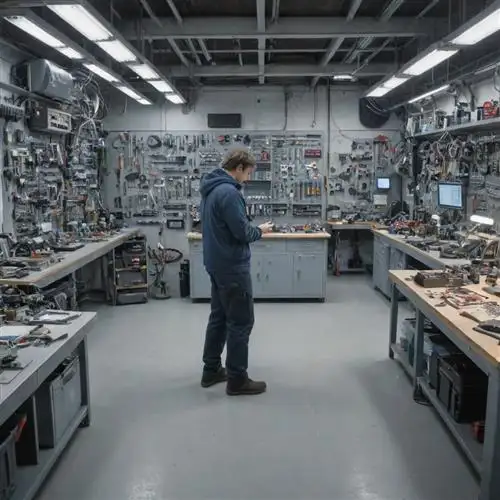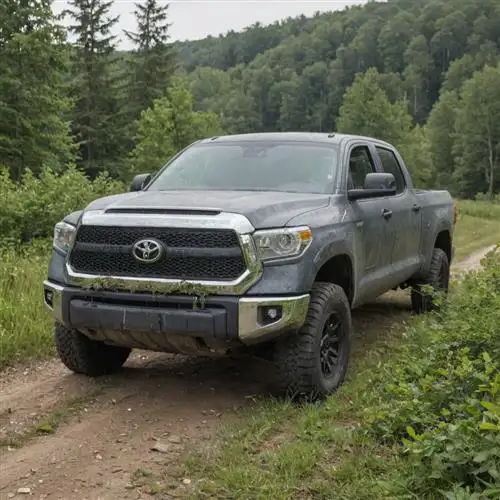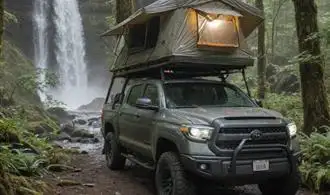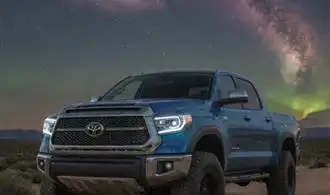
Failing to Plan Your Budget
When it comes to modifying your Toyota Tundra, one of the most common and costly mistakes is failing to plan your budget effectively. It's easy to get caught up in the excitement of upgrading your truck, but without a well-thought-out financial plan, you can quickly find yourself in over your head. Here are some crucial considerations to keep in mind when budgeting for Tundra modifications:
Understand the true cost of parts and labor. Don't just rely on the sticker price of the parts you want to install. Factor in additional expenses such as shipping, taxes, and the labor required for installation. Many modification projects require specialized expertise, so be prepared to pay a premium for professional work.
Leave room for unexpected expenses. No matter how well you plan, there's always the potential for unforeseen issues or complications to arise during the modification process. Build in a buffer to your budget to account for these unexpected costs, which can quickly add up and derail your project.
Research financing options carefully. If you don't have the cash on hand to cover the full cost of your modifications, explore financing options like personal loans or credit cards. However, be mindful of interest rates and repayment terms, as these can significantly impact the overall cost of your project.
Prioritize your modifications. With a limited budget, you may not be able to tackle everything on your Tundra modification wish list at once. Prioritize the most important upgrades and tackle them in stages, allowing you to spread out the costs over time.
Consider the long-term impact on your vehicle's value. While some modifications can enhance the resale value of your Tundra, others may actually decrease it. Be mindful of how your upgrades will affect the vehicle's overall worth, especially if you plan to sell it in the future.
Overlooking Compatibility Issues
When it comes to modifying your Toyota Tundra, compatibility issues can be a significant source of frustration and financial burden. Failing to ensure that aftermarket parts and accessories are compatible with your specific Tundra model can lead to a range of problems, from improper fitment to premature wear and tear. In this section, we'll delve into the importance of compatibility and provide valuable insights to help you avoid these costly mistakes.
One of the primary compatibility concerns when modifying a Toyota Tundra is ensuring that the parts and accessories you choose are designed and engineered specifically for your vehicle's make, model, and year. Seemingly minor differences in dimensions, mounting points, and wiring harnesses can make a significant difference in how the modifications integrate with your Tundra. Ignoring these compatibility factors can result in parts that don't fit properly, causing damage or requiring extensive modifications to make them work.
Another important consideration is the impact of modifications on your Tundra's overall performance and safety. For example, installing larger tires or a lift kit without ensuring the compatibility with your Tundra's suspension and braking system can compromise the vehicle's handling, stability, and braking efficiency. This can not only affect the driving experience but also put you and your passengers at risk.
Compatibility issues can also arise when it comes to electrical and electronic upgrades, such as installing a new stereo system or adding auxiliary lighting. Failing to ensure that the new components are compatible with your Tundra's electrical system can lead to a range of problems, from blown fuses to electrical malfunctions that can impact the overall performance and reliability of your vehicle.
To avoid these costly mistakes, it's crucial to thoroughly research and consult with experts who specialize in Toyota Tundra modifications. They can provide valuable guidance on the compatibility of specific parts and accessories, as well as the potential impact on your Tundra's performance and safety. Additionally, it's always a good idea to carefully follow the manufacturer's instructions and recommendations when installing any aftermarket components.
Ignoring Maintenance Requirements
One of the costliest mistakes you can make when modifying your Toyota Tundra is neglecting its maintenance requirements. Modifications, whether performance upgrades or aesthetic enhancements, can put additional stress on the vehicle's systems. Failing to keep up with recommended service intervals and inspections can lead to a host of problems, from decreased fuel efficiency and decreased engine performance to premature wear and even catastrophic failures.
Regular maintenance is crucial to ensure your Tundra's modified components function as intended and integrate seamlessly with the rest of the vehicle. This includes, but is not limited to:
- Changing engine oil and filters at the recommended intervals, even if you've installed a high-performance oil system.
- Inspecting and replacing worn or damaged suspension components, such as shocks, struts, and bushings, to maintain a smooth and stable ride.
- Regularly checking and maintaining the braking system, including brake pads, rotors, and calipers, to ensure reliable and consistent stopping power.
- Monitoring and addressing any issues with the electrical system, as modifications can place additional strain on the alternator, battery, and wiring harness.
- Keeping a close eye on the cooling system, including the radiator, hoses, and coolant, to prevent overheating and potential engine damage.
Underestimating Installation Complexity
When it comes to modifying your Toyota Tundra, one of the costliest mistakes you can make is underestimating the complexity of the installation process. Many DIY enthusiasts often believe that a simple bolt-on modification or an easy-to-follow tutorial will be enough to get the job done, but the reality is that even seemingly straightforward upgrades can quickly become a nightmare if you're not prepared.
One of the primary reasons why installation complexity can be underestimated is the sheer size and complexity of the Tundra itself. As a full-size pickup truck, the Tundra has a lot of components, wiring, and intricate systems that need to be carefully navigated during any modification. Even something as simple as installing a new set of off-road tires can require extensive research, specialized tools, and a deep understanding of the vehicle's suspension and wheel well configurations.
Another factor that contributes to the underestimation of installation complexity is the lack of standardization in the aftermarket industry. While there are many high-quality parts and accessories available for the Tundra, the fit, compatibility, and installation requirements can vary widely between manufacturers and even between different model years of the same vehicle. This means that a modification that worked perfectly on one Tundra may not be a straightforward swap on another, requiring additional modifications, custom fabrication, or even the purchase of additional components.
To avoid the costly mistakes of underestimating installation complexity, it's crucial to do thorough research and planning before embarking on any modification project. This includes:
- Carefully reviewing the installation instructions and guides provided by the manufacturer or retailer, and ensuring that you fully understand all the steps involved.
- Consulting with experienced Tundra owners or mechanics who have performed similar modifications, and asking for their insights and recommendations.
- Investing in the right tools and equipment, such as specialized wrenches, jacks, and diagnostic tools, to ensure that the installation process is smooth and efficient.
- Budgeting for any unexpected costs or complications that may arise during the modification process, such as the need for custom fabrication or additional parts.
- Allowing ample time for the installation, as rushing through the process can lead to mistakes and create even more problems down the line.
Disregarding Legal Regulations
When modifying your Toyota Tundra, it's crucial to be aware of the legal regulations in your area. Failure to comply can lead to hefty fines, license suspension, and even legal trouble. Start by understanding the laws and regulations surrounding vehicle modifications in your state or province. Some common issues to be aware of include noise restrictions, emissions standards, and safety requirements.
Noise regulations are a prime example. Many areas have strict decibel limits on exhaust systems and other vehicle components. Upgrading your Tundra's exhaust without considering these limits can result in costly tickets and potential impoundment of your vehicle. Similarly, emissions regulations may restrict the type of modifications you can make to your engine or fuel system.
Safety is another key concern. Certain modifications, such as lift kits or oversized tires, may require additional inspections or approvals to ensure your Tundra remains roadworthy and compliant with local laws. Ignoring these requirements can jeopardize your vehicle's registration and put you at risk of accidents or liability.
Before undertaking any modifications, research the relevant laws and regulations in your area. Consult with local authorities, such as the Department of Motor Vehicles or your state's vehicle inspection program, to understand the specific requirements and guidelines you need to follow. Investing the time upfront to ensure your modifications are legal and safe can save you from significant headaches and expenses down the road.
















